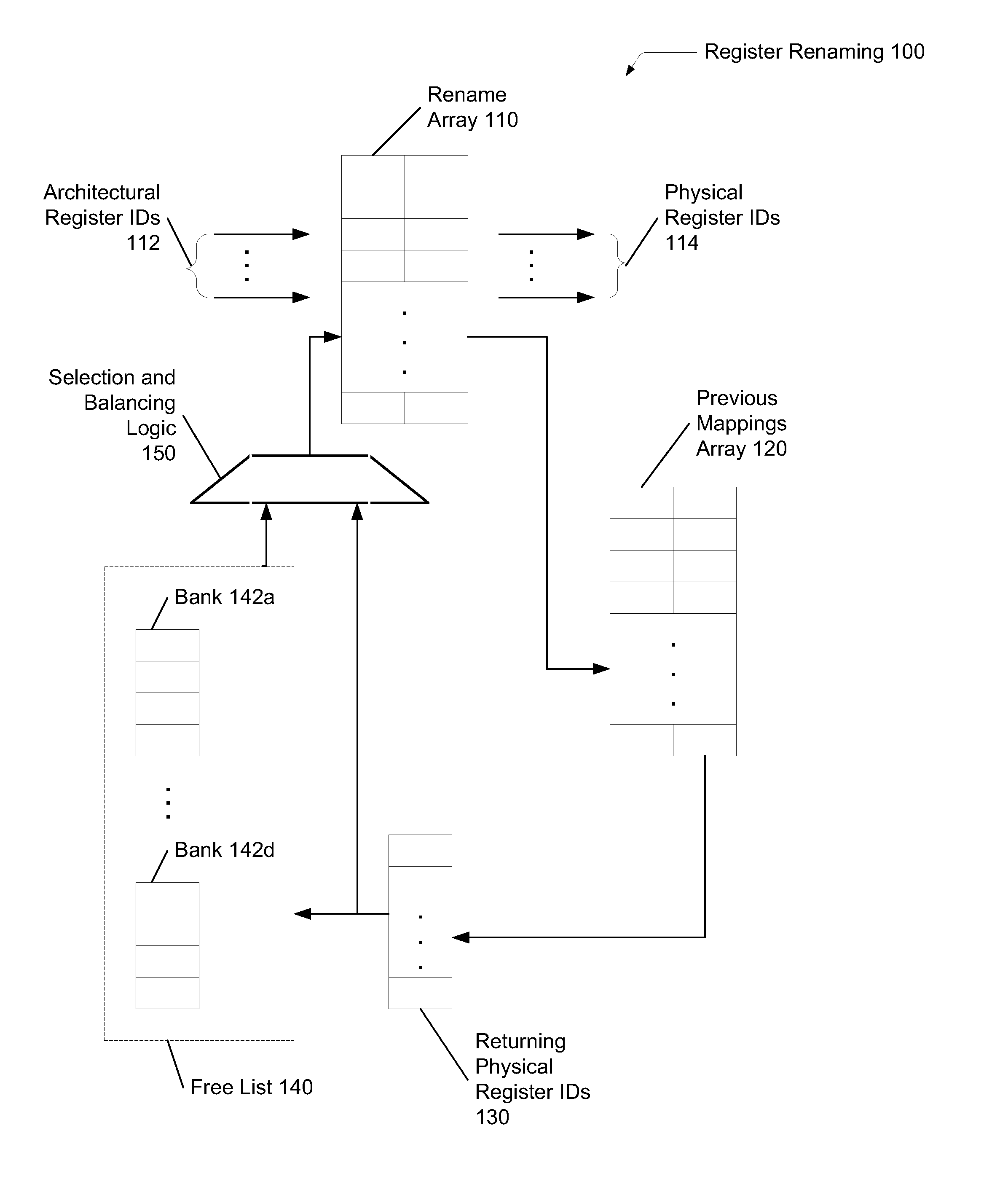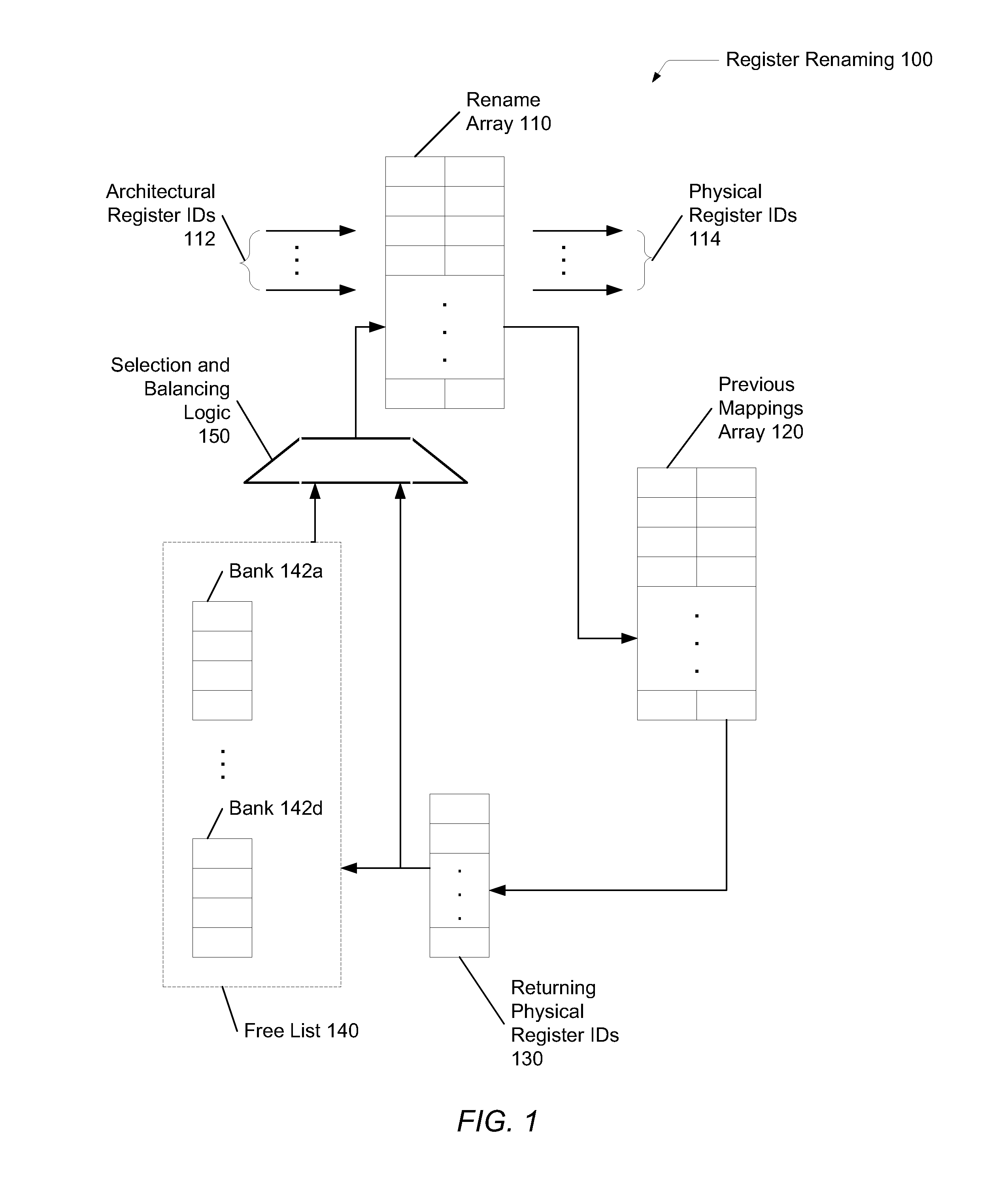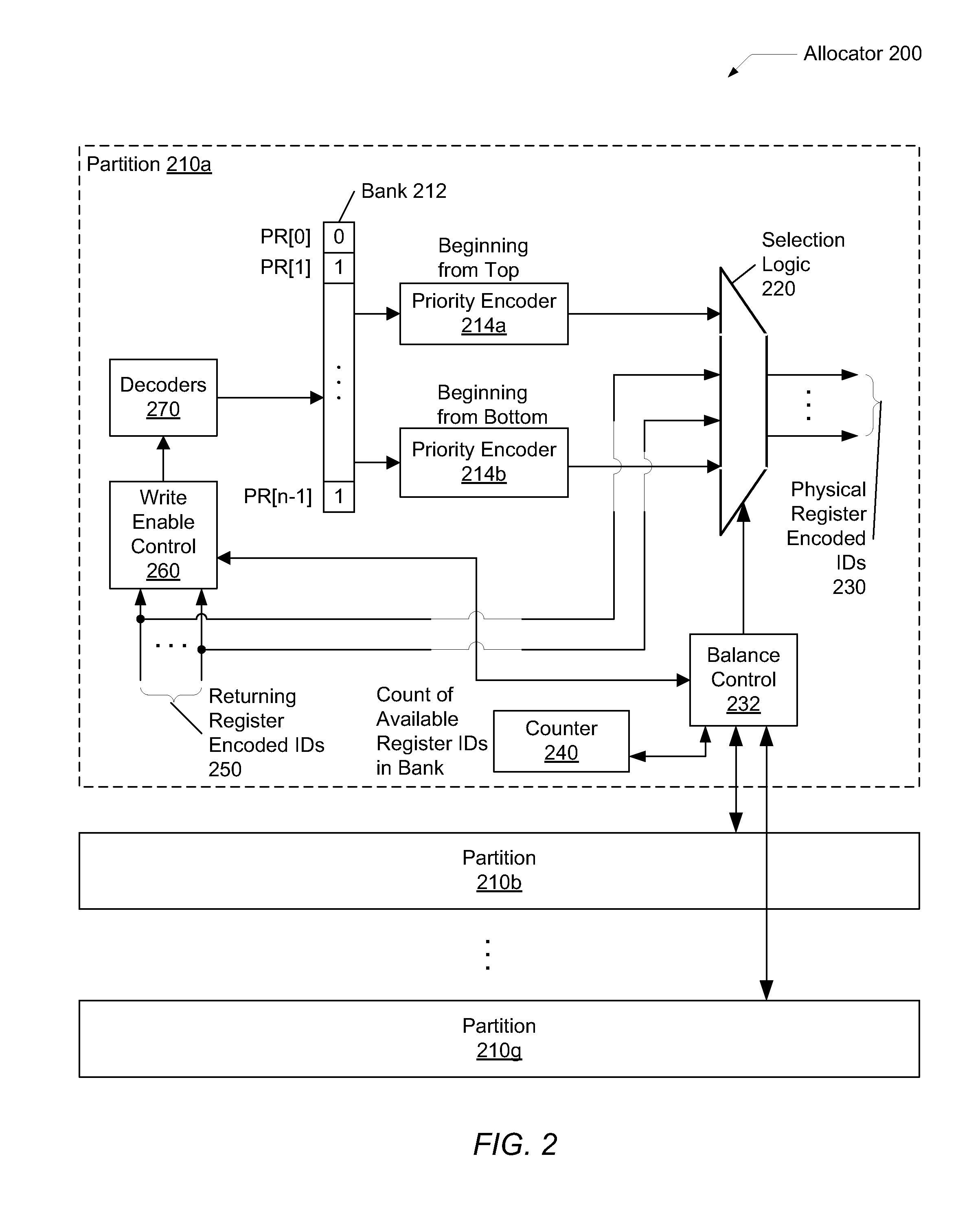Low power and high performance physical register free list implementation for microprocessors
a microprocessor and register free technology, applied in the field of microprocessors, can solve the problems of reducing the maximum throughput of the microprocessor, adding more hardware and more depth to the pipeline, etc., and achieve the effect of reducing the latency and power of register renaming
- Summary
- Abstract
- Description
- Claims
- Application Information
AI Technical Summary
Benefits of technology
Problems solved by technology
Method used
Image
Examples
Embodiment Construction
[0008]Systems and methods for reducing the latency and power of register renaming are contemplated. In various embodiments, a processor includes a register rename unit that receives decoded instructions. The decoded instructions include one or more destination architectural registers (ARs) for renaming. The processor may also include a free list, storing availability information corresponding to multiple physical registers (PR) used for register renaming. In some embodiments, the free list may comprise multiple banks The register rename unit additionally receives one or more returning PR IDs. A returning PR ID is a PR ID that is available again for assignment to a destination AR but is not yet indicated in the free list as being available.
[0009]Control logic, which may be within the register rename unit, may determine that the multiple banks within the free list are unbalanced with available PR IDs. In response to this determination, the register rename unit may assign one or more r...
PUM
 Login to View More
Login to View More Abstract
Description
Claims
Application Information
 Login to View More
Login to View More - R&D
- Intellectual Property
- Life Sciences
- Materials
- Tech Scout
- Unparalleled Data Quality
- Higher Quality Content
- 60% Fewer Hallucinations
Browse by: Latest US Patents, China's latest patents, Technical Efficacy Thesaurus, Application Domain, Technology Topic, Popular Technical Reports.
© 2025 PatSnap. All rights reserved.Legal|Privacy policy|Modern Slavery Act Transparency Statement|Sitemap|About US| Contact US: help@patsnap.com



